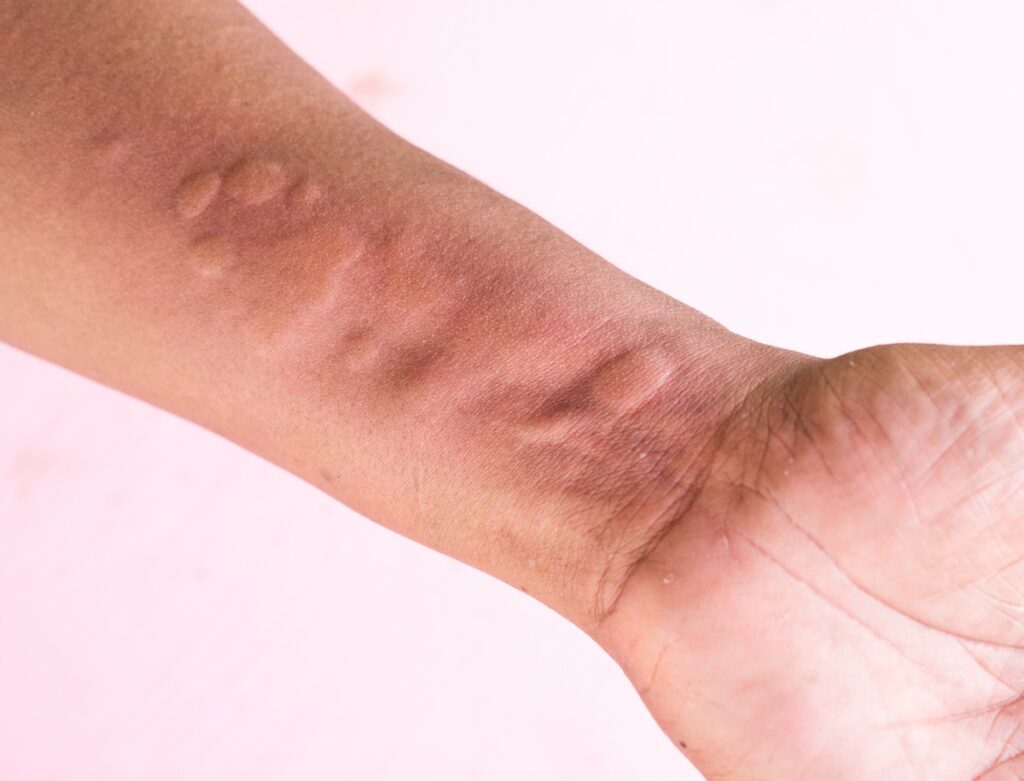December 28, 2023
Navigating Airborne Food Allergens: Risks, Reactions, and Precautions

Food allergies can be a challenging and sometimes life-altering aspect of daily life. From carefully scrutinizing menus to packing allergen-safe snacks, individuals and families with food allergies know the importance of being vigilant. However, there’s another dimension to managing food allergies that often goes under the radar: airborne food allergens. In this article, we’ll delve into the world of airborne food allergens, discussing the risks, reactions, and precautions you need to know.
Understanding Airborne Food Allergens
Reactions to airborne food allergens are rare. This means that it’s not very common for people with food allergies to have severe allergic reactions when they’re exposed to allergens in the air. Most of the time, people with food allergies can go about their daily lives without encountering airborne allergens that cause a reaction.
When someone with a food allergy does have a reaction to airborne allergens, the severity of the reaction can vary. Some people might experience mild symptoms, while others might have severe symptoms. This means that the way the body reacts to the food allergen can be different from person to person.
Common Symptoms of Airborne Exposure
These are the symptoms that people might experience when they are exposed to allergens in the air:
- Congestion: A feeling of stuffiness or blockage in the nose or throat. It can make it harder to breathe through the nose.
- Runny Nose: When the nose produces more mucus than usual, and it might drip from the nostrils.
- Hives: Itchy, raised, and often red or pink bumps on the skin. They can appear in response to an allergen.
- Coughing: The body’s way of trying to clear the airways. It’s a common reaction to irritants in the air.
- Wheezing: Wheezing is a high-pitched whistling sound that occurs when someone breathes. It can be a sign of narrowed airways and is often associated with asthma.

There is an increased risk for individuals with asthma. People who have asthma, a chronic respiratory condition that can cause airway inflammation and constriction, are more likely to experience respiratory issues when they are exposed to airborne food allergens. This means that if someone with asthma comes into contact with these allergens in the air, they are at a higher risk of having breathing difficulties, such as wheezing or difficulty in catching their breath.
While extremely rare, anaphylactic reactions to airborne allergens are not unheard of. Tragically, there have been cases where individuals with severe allergies suffered severe reactions triggered by airborne allergens.
Airborne Allergens: The Culprits
Certain allergenic foods are more likely to release proteins into the air when they are heated. Fish and shellfish, for instance, are known to do this. People diagnosed with fish or shellfish allergies may experience allergy symptoms when these foods are being steamed, boiled, or fried. The severity of the allergy plays a significant role in the risk of a reaction. Let’s delve into more detail about the specific airborne allergens and how they can trigger food allergy symptoms and allergic reactions.
Fish and Shellfish:

- Protein Release: When fish and shellfish are heated during cooking processes like steaming, boiling, or frying, they release proteins into the air. These proteins can become airborne.
- Allergic Reactions: Individuals diagnosed with fish or shellfish allergies may experience allergic reactions when they are exposed to these airborne proteins. These reactions can range from mild to severe.
- Severity Matters: The severity of the allergic reaction often depends on the individual’s allergy. Those with more severe allergies are at a higher risk of experiencing a more intense reaction.
- Proximity and Ventilation: The risk of a reaction increases when someone with a fish or shellfish allergy is in close proximity to the cooking process in a confined space. In contrast, being farther away in a large, well-ventilated area reduces the risk.
Eggs and Milk:

- Protein Release: Like fish and shellfish, cooking eggs and milk can also release allergenic proteins into the air.
- Allergic Reactions: Individuals with egg or milk allergies may experience allergic symptoms when these proteins become airborne during cooking.
- Stirring and Proximity: Even simple actions like stirring boiling pasta that contains egg or milk can release these proteins into the air, potentially triggering a reaction.
Fine Food Particles:

- Sources: Ingredients like soy flour, wheat flour, powdered egg, and powdered milk are examples of fine food particles that can easily become airborne.
- Inhalation: These particles can float through the air and be inhaled by individuals in the vicinity.
- Baker’s Asthma: People who work in bakeries and handle these ingredients daily are at risk of developing a condition known as “baker’s asthma.” This condition occurs after prolonged and intense exposure to these fine food particles.
- Respiratory Symptoms: Baker’s asthma can lead to a range of respiratory symptoms, including coughing, wheezing, and difficulty breathing.
The Peanut Puzzle
Peanuts are perhaps the most high-profile of all food allergens, and concerns about airborne peanut exposure are common. However, researchers have not conclusively proven that peanuts aerosolize in the same way as fish and shellfish. Having an open jar of peanut butter in the same room as a person with a peanut allergy is not likely to result in symptoms.
Nevertheless, it’s crucial to exercise caution around peanuts, especially on surfaces and in other foods. What might seem like a reaction to peanuts in the air may be traces of peanuts on a countertop or a plate.
Precautions for Dealing with Airborne Allergens
It’s essential to remember that serious reactions to airborne allergens are rare. Nevertheless, the likelihood of experiencing a reaction increases in individuals who have asthma and are highly allergic to a food that can aerosolize.
To stay safe, consider these precautions:
- Stay Out of the Kitchen: When you’re concerned about a potential reaction to airborne allergens, it’s best to avoid the kitchen when the offending food is being prepared. Let someone else do the cooking, so you can breathe easy.
- Keep an Epinephrine Auto-Injector Handy: Always have an up-to-date epinephrine auto-injector ready, just in case of a severe allergic reaction.
- Maintain Allergen Awareness: Be diligent about allergen awareness. Educate yourself and those around you about the risks of airborne food allergens.
- Practice Allergy-Friendly Cooking: If you have allergies or are cooking for someone with allergies, follow allergy-friendly cooking practices. Avoid cross-contamination, thoroughly clean surfaces, and use separate utensils.
Top 9 Allergens and How to Avoid Them When Cooking
Additionally, it’s vital to be well-versed in the Top 9 food allergens, which include milk, eggs, peanuts, tree nuts, fish, shellfish, soy, wheat, and sesame. These allergens account for the majority of common food allergies and can potentially trigger severe reactions.

To avoid unintentional exposure when preparing meals, always read ingredient labels carefully, and double-check for any hidden sources of these allergens. When cooking at home, consider using allergen-free substitutes or alternative ingredients to replicate flavors and textures. For instance, you can use dairy-free milk alternatives, egg replacers like applesauce or flaxseed, or nut-free spreads in place of traditional ingredients. Additionally, keep separate utensils, cutting boards, and cookware for allergen-free cooking and label them clearly to prevent cross-contamination. Being aware of these common allergens and taking precautionary measures can help ensure a safe dining experience for everyone.
In conclusion, understanding and managing airborne food allergens is crucial for individuals with food allergies. While the risk of serious reactions is relatively low, it’s essential to remain vigilant, especially if you have asthma or a severe allergy. By recognizing the potential risks associated with specific allergenic foods, taking necessary precautions, and maintaining well-ventilated spaces, individuals with food allergies can continue to enjoy life while minimizing their exposure to airborne allergens. Moreover, regular visits with your allergist and seeking appropriate allergy treatment can provide essential guidance and support in managing your specific allergies effectively. Stay informed, stay safe, and savor every moment while prioritizing your health and well-being.